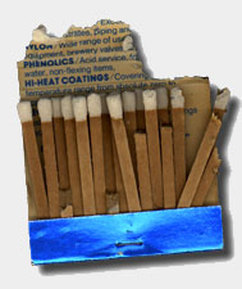CHILDREN PLAYING WITH FIRE
Children playing with fire cause hundreds of deaths and thousands of injuries each year. Preschoolers are most likely to start these fires, typically by playing with matches and lighters, and are most likely to die in them.
Facts & Figures*
*From NFPA's Children Playing with Fire, by John R. Hall, Jr., March 2005.
Safety tips
Facts & Figures*
- In 2002, children playing with fire started an estimated 13,900 structure fires that were reported to U.S. fire departments, causing an estimated 210 civilian deaths, 1,250 civilian injuries and $339 million in direct property damage.
- The figures for 2002 structure fires, civilian deaths and civilian injuries are the lowest ever recorded.
- Most of the people killed in child-playing fires are under 5, and such fires are the leading cause of fire deaths among preschoolers.
- Roughly two out of every three child-playing fires -- and three out of four associated deaths and injuries -- involve matches or lighters.
- The child-playing fire problem has been smaller, relative to population, in Canada and much smaller in Japan.
- Children also start fires by playing with candles, fireworks, stoves and cigarettes.
- Among fatal home fires started by children playing, seven out of 10 involve children igniting bedding, mattresses, upholstered furniture or clothing.
- Just over half of child-playing fires in the home start in a bedroom.
- Children who start fires may be children in crisis, with the fires acting as cries for help from stressful life experiences or abuse, according to studies of fire-setting behavior.
- As of 2002, deaths in child-playing home structure fires had declined by roughly half since 1994, when the child-resistant lighter standard went into effect.
*From NFPA's Children Playing with Fire, by John R. Hall, Jr., March 2005.
Safety tips
- Store matches and lighters out of children's reach and sight, up high, preferably in a locked cabinet.
- Never use lighters or matches as a source of amusement for children. They may imitate what you do.
- If your child expresses curiosity about fire or has been playing with fire, calmly but firmly explain that matches and lighters are tools for adults only.
- Use only lighters designed with child-resistant features. Remember child-resistant does not mean child proof.
- Teach young children to tell an adult if they see matches or lighters, and teach school-age children to bring any matches or lighters to an adult.
- Never leave matches or lighters in a bedroom or any place where children may go without supervision.
- If you suspect your child is intentionally setting fires or unduly fascinated with fire, get help. Your local fire department, school, or community counseling agency can put you in touch with trained experts.

